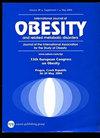Correlations and consistency of body composition measurement indicators and BMI: a systematic review
IF 4.2
2区 医学
Q1 ENDOCRINOLOGY & METABOLISM
引用次数: 0
Abstract
It is critical to accurately determine the level of obesity and health status since overweight/obesity has become a main global public health problem. This systematic review attempted to evaluate the consistency and correlation between body composition measurement indicators and body mass index (BMI) in childhood and adolescence. Seven electronic databases (Web of Science, PubMed, Cochrane Library, Embase, CNKI, WANFANG DATA, SinoMed) were searched to collect the literature published since 1999 with the focus on the relationship between body composition measurement indicators and BMI to measure obesity in childhood and adolescence. Among the 28 articles included, 13 articles reported a moderate to very strong correlation between %BF and BMI in obesity measurement (range: 0.49–0.907), while two articles reported a strong to very strong correlation between FM and BMI (range: 0.60–0.86). Six articles reported good to excellent obesity measurement consistency between %BF and BMI (range: 0.441–0.876), one article reported WC (0.58) and WHtR (0.46) in the moderate consistency with BMI, and one article reported a relatively poor to fair consistency between FM and BMI (range: 0.167–0.409). WC, WHtR, and BMI showed the moderate consistency in pre-adolescent children. In pre-adolescence and adolescence, the measurement consistency between %BF and BMI was higher than that between FM and BMI. Gender difference existed in the consistency between %BF and BMI during adolescence. A range of body composition indicators such as %BF, WC, WHtR, and FM could provide valuable body composition measurements, complement BMI for obesity assessment in children and adolescents, and facilitate efficient and comprehensive surveillance of childhood obesity. PROSPERO CRD42024506932.

身体成分测量指标与体重指数的相关性和一致性:系统综述。
目的:超重/肥胖已成为全球主要的公共卫生问题,因此准确确定肥胖程度和健康状况至关重要。本系统综述试图评估儿童和青少年身体成分测量指标与体重指数(BMI)之间的一致性和相关性:方法:检索了 7 个电子数据库(Web of Science、PubMed、Cochrane Library、Embase、CNKI、WANFANG DATA、SinoMed),收集了自 1999 年以来发表的文献,重点关注儿童和青少年肥胖的身体成分测量指标与 BMI 之间的关系:结果:在收录的 28 篇文章中,13 篇文章报道了在肥胖测量中,%BF 和 BMI 之间存在中度到非常强的相关性(范围:0.49-0.907),2 篇文章报道了 FM 和 BMI 之间存在强到非常强的相关性(范围:0.60-0.86)。有六篇文章报告称,BF%与 BMI 之间的肥胖测量一致性良好至极佳(范围:0.441-0.876),一篇文章报告称,WC(0.58)和 WHtR(0.46)与 BMI 之间的一致性中等,一篇文章报告称,FM 与 BMI 之间的一致性相对较差至一般(范围:0.167-0.409)。在青春期前的儿童中,WC、WHtR 和 BMI 显示出中等程度的一致性。在青春期前和青春期,%BF 和 BMI 之间的测量一致性高于 FM 和 BMI 之间的测量一致性。结论:结论:%BF、WC、WHtR 和 FM 等一系列身体成分指标可提供有价值的身体成分测量结果,补充 BMI 在儿童和青少年肥胖评估中的作用,并有助于对儿童肥胖进行有效和全面的监测:ProCORMBERCO CRD42024506932.
本文章由计算机程序翻译,如有差异,请以英文原文为准。
求助全文
约1分钟内获得全文
求助全文
来源期刊

International Journal of Obesity
医学-内分泌学与代谢
CiteScore
10.00
自引率
2.00%
发文量
221
审稿时长
3 months
期刊介绍:
The International Journal of Obesity is a multi-disciplinary forum for research describing basic, clinical and applied studies in biochemistry, physiology, genetics and nutrition, molecular, metabolic, psychological and epidemiological aspects of obesity and related disorders.
We publish a range of content types including original research articles, technical reports, reviews, correspondence and brief communications that elaborate on significant advances in the field and cover topical issues.
 求助内容:
求助内容: 应助结果提醒方式:
应助结果提醒方式:


